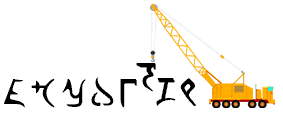 Conlangs
Conlangs
Conlangs A-Z
Conlangs At A Glance
Conlang Directories
Conlang Yellow Pages
Top 100 Conlangs
More Questions? Contact me.
Speak in Lojban Finally, a language that makes sense to humans (and robots)! www.lojban.org |
condir_stealth
© 1996-2004 Jeffrey Henning.
Conlang Directory: Stealth
- Awolang
- I decided to make a language only for amusement. I think its structure is unique because I haven't seen something like that in a language. Maybe that system already exists, but I haven't seen it yet. Structurally Awolang is extremely agglutinative; in a word you must place subject+verb-root+tense, in another adverb+adjective+subsstantive root+number. Phonetically it is kind of difficult, because it has more that 40 sounds, basically all the sounds I could think of. If you want to know more, you can contact me at atila42 at hotmail.com. [Daniel Carrasco]
- Bala-i-balan
- Bala-i-balan was invented by an Islamic schismatic named Muheddin in the 1500s (exact date unknown), making it one of the oldest artificial languages. Its lexicon borrows words from Turkish, Arabic and Persian; its grammar is based on Turkish but with Arabic syntax. It was written using the Arabic script. [Muheddin]
- Damin
- This language was used by the Lardil tribe, of Mornington Island off the coast of Australia. It was used as an initiation language for men and was an unusual variant (or speaking style or slang) of the "everyday" Lardil language. Damin is fascinating and well worth learning about.
- Duirún
- Duirún was created in 1985 to escape reality and to develop a new way of communication which is not based on and influenced by tradition, history and other languages. [Arne Duering]
- Finglish
- This language was introduced by my friends based on my own conlang "Fargilisi" to the students. This language is now popular in Iran between students and Internet users.
- Iksto
- Iksto is an extremely easy to learn language that has a (as far as I know) unique system of words: each word has not a hard definition but a nebulous idea for a definition: one word can mean many things, regardless of part of speech. [Keith Mitchell]
- Kiromi
- Wolf created Kiromi for the amusement of himself and his friends and as an enjoyable way of learning more about linguistics. It has the most informal definitions I have encountered in a constructed language, with words such as batra (defined as "drums, poundable instruments of rhythm") and bejke (defined as "belch, burp, suddenly emit"). [Raphael Singing Wolf]
- Lingua Ignota
- Dating back to the 1100s, Lingua Ignota ("Unknown Language") is considered to be the first constructed language ever invented (or the first that we have record of). [Hildegarde of Bingen]
- Musbrek
- Musbrek belongs to the Eastern Germanic language family and is intended as a stealth language. [Jashan A'al]
- Panovese Kal
- An artificial modification of the Limburgian dialect of Kortessen.
- Romanico
- A kind of Esperanto-ized proto-Romance, Romanico was conceived as an aid to shoplifting by a group of sticky-fingered high school nerds, some of whom later found other, more legitimate uses for it [Anonymous]
- Sheng
- Sheng was invented by the youth of Kenya as a variation of Swahili. Its main intent was for the youth of Kenya to be able to converse without the fear of authority figures comprehending. [unknown]
- Ta Ti
- Ta Ti only has 99 words total. [Marq Thompson]
- Taneraic
- This language was originally intended only for use by the author in writing his journal, but he has since made the language public. [Javant Biaruja]
- Ummo
- Strangely enough, the interest shown in ET phenomena manifests itself differently from country to country. In England, one hears about crop circles, whereas in the USA it is Area 51 and individual testimonials of implants or abductions. In Europe, particularly in Spain (the origin of the Ummite letters) and France, the Ummo affair is more widely-known, due no doubt to the books written on the subject. The letters in question were originally dictated in Spanish, then translated into French. To our knowledge, this is the first time the "essential texts" have been translated into English. We trust the reader will forgive any possible ambiguities in this text since some were already present in the French translation. We have good reason to believe that several letters in English may have already been sent to Canadian, American or Australian contacts (there are also certainly letters in German and Japanese)...It is our hope that if you have a copy of one or several of these letters, you will contact the webmaster of this site so that we can mutually complete our information regarding this event and "Ummite thought", on a strictly documentary and philosphical basis... but we steadfastly refuse to enter into a "sectarian" mindset!
- Yerti
- This language is a cross between French, Japanese and a bit of gibberish. For example, the verb in Yerti "to eat" is from the Japanese and French verbs, manger and taberu. The verb for "to eat" in Yerti is taman. [Andy Helber]
16 languages listed.
Updated on January 10, 2005 at 3:36 PM (GMT-5).


